Key takeaways:
- Automation testing enhances efficiency and reduces human error, enabling quicker feedback and more focus on innovation.
- Maintaining test scripts and dealing with flaky tests are significant challenges in automation that require ongoing attention.
- Effective tools like Selenium and JUnit can significantly improve testing quality and streamline processes.
- Collaboration and adaptability are critical to overcoming difficulties in automation, leading to continuous improvement and learning.
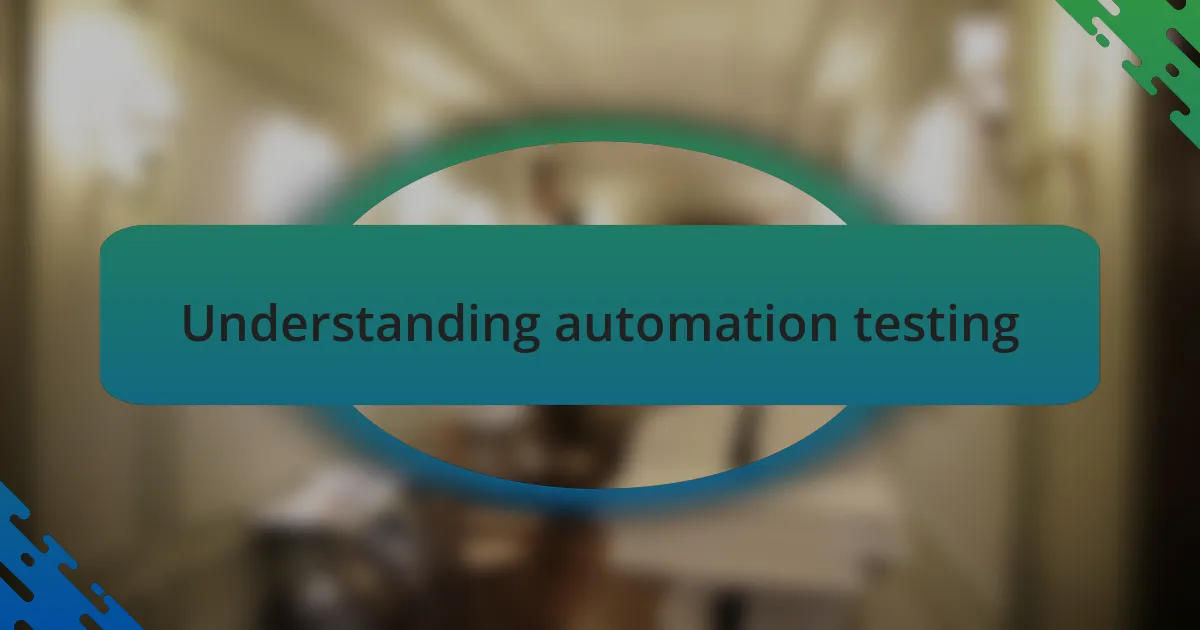
Understanding automation testing
Automation testing is a method that uses specialized software tools to execute tests on applications, ensuring that they work as intended. I still remember my first encounter with automation testing; it felt like a revelation. It was no longer about manually clicking through screens but rather watching my scripts run smoothly and provide instant feedback. Have you ever felt the thrill of seeing an automated test pass after hours of effort setting it up?
The beauty of automation testing lies in its efficiency and repeatability. Once a test is automated, it can be executed any number of times without additional input, reducing the risk of human error. I often reflect on a project where automation allowed us to run comprehensive regression tests overnight. The next morning, we’d have results ready, providing our team with the critical insights we needed to move forward without delay. Isn’t that a game-changer for project timelines?
Moreover, automation testing enables teams to focus on what really matters: creating innovative features and improving user experiences. I recall a time when manual testing consumed so much time that our developers were frustrated. But after implementing automation, not only did our efficiency soar, but we also found time to explore creative solutions for our users. Can you relate to the shift in mindset that comes with freeing up resources for innovation?
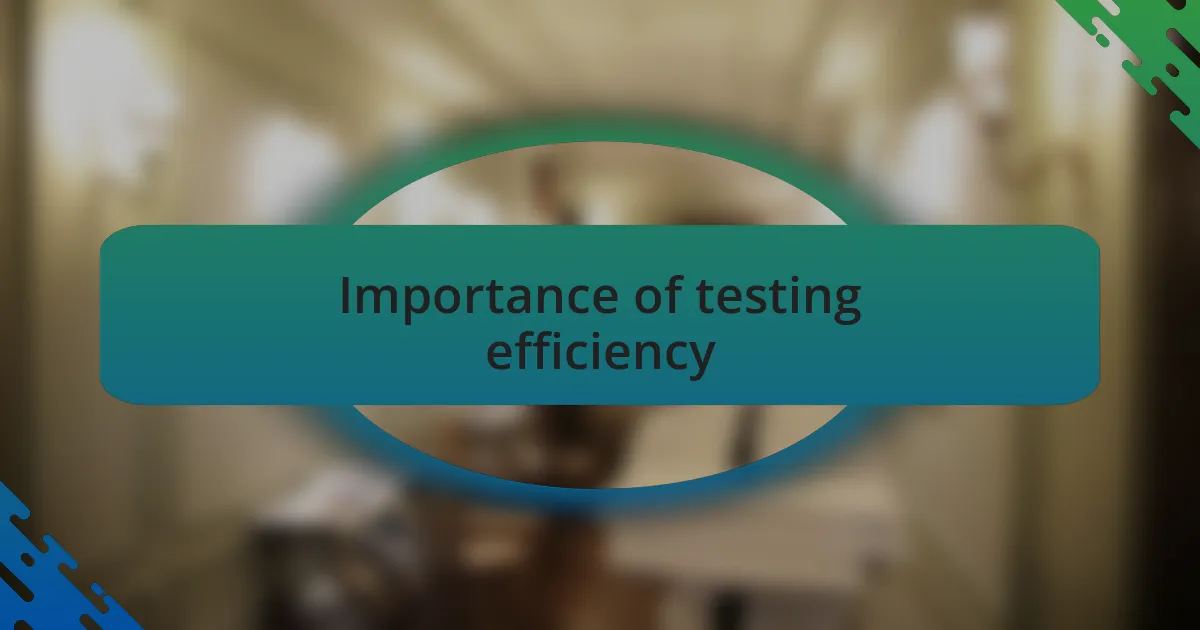
Importance of testing efficiency
Testing efficiency is often underestimated, yet it’s a cornerstone in delivering quality software. I remember a project where testing bottlenecks led to delays and frustration among team members. The impact was palpable; a delayed release meant lost opportunities. Can you imagine how much smoother our processes would have been if we had prioritized testing efficiency earlier?
When testing is efficient, it accelerates feedback loops significantly. One time, I implemented a more streamlined testing process, and the difference was staggering. Instead of waiting days for results, we received immediate insights, allowing us to address issues in real time. It’s astonishing how a swift response can boost team morale and foster a culture of continuous improvement.
Additionally, increased testing efficiency translates to higher product quality and customer satisfaction. I vividly recall implementing a set of automated tests that sifted through user flows, catching potential issues before they became real problems. The relief in our product owner’s voice when we confidently delivered a bug-free release is something I will always cherish. Don’t you think that delivering a stable, high-quality product should be at the forefront of our objectives?
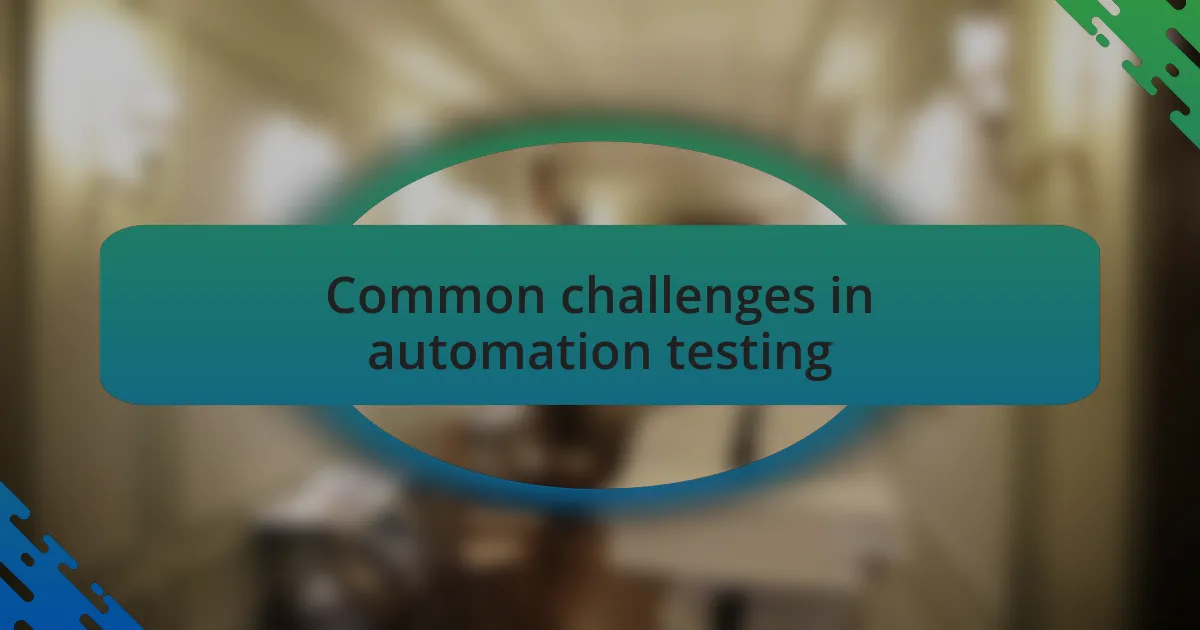
Common challenges in automation testing
One of the most common challenges I’ve faced in automation testing is maintaining test scripts. Over time, as the underlying codebase evolves, tests can quickly become outdated or irrelevant. I vividly remember spending days debugging tests that had failed due to minor feature changes—what a frustrating experience! Have you ever found yourself struggling to keep pace with application updates while trying to ensure that your test suite remains effective?
Another hurdle is dealing with flaky tests, which can lead to a significant waste of time and resources. These tests fail intermittently, often without any apparent reason, causing confusion and mistrust in automated testing. I once had a particularly troublesome test that seemed to run perfectly in isolation but failed consistently in the CI/CD pipeline. It prompted me to dig deeper into the root causes—and what I uncovered was eye-opening. Can you relate to the frustration that comes when your testing efforts yield unreliable results?
Lastly, the initial investment of time and resources in setting up automation can seem daunting. I recall the weeks spent configuring frameworks and training the team on best practices. It felt overwhelming at first, but in retrospect, that foundation became essential for long-term success. Isn’t it fascinating how that upfront effort can pay dividends in efficiency and accuracy when done right?
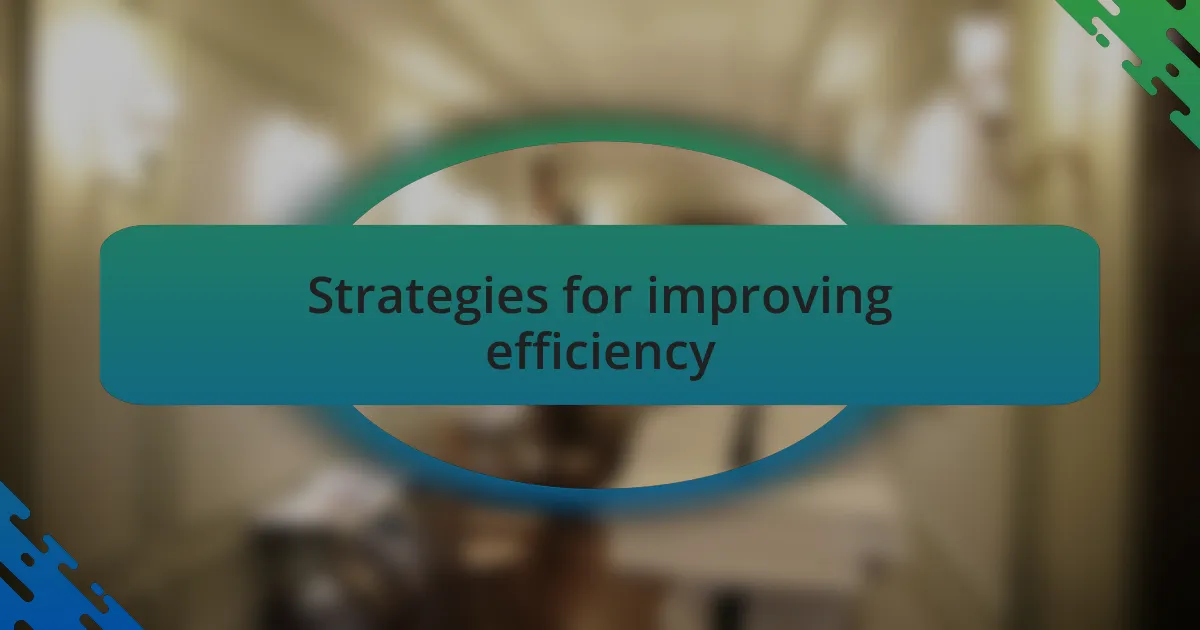
Strategies for improving efficiency
When it comes to improving efficiency in automation testing, I’ve found that prioritizing robust test design is crucial. For instance, I started implementing a modular approach, breaking tests into smaller, manageable components. This not only made my tests easier to maintain but also allowed me to reuse scripts across different scenarios, significantly cutting down on duplicated efforts. Have you considered how restructuring your test cases might lead to simpler management and greater flexibility?
Another strategy that’s made a substantial difference for me is leveraging parallel execution. Initially, I was running tests sequentially, which felt like watching paint dry. Once I set up a parallel framework, the testing cycles accelerated dramatically. I remember the exhilaration when I saw my test results coming in much faster—what a game changer! Have you explored how parallelism could transform your testing workflows?
Lastly, integrating continuous feedback through automated reports can elevate efficiency significantly. I implemented tools that provide real-time summaries after each test run, allowing my team to quickly identify failures and issues. It’s like having a spotlight on potential problems, guiding us directly to areas needing attention. Isn’t it empowering to have such immediate insights at your fingertips?
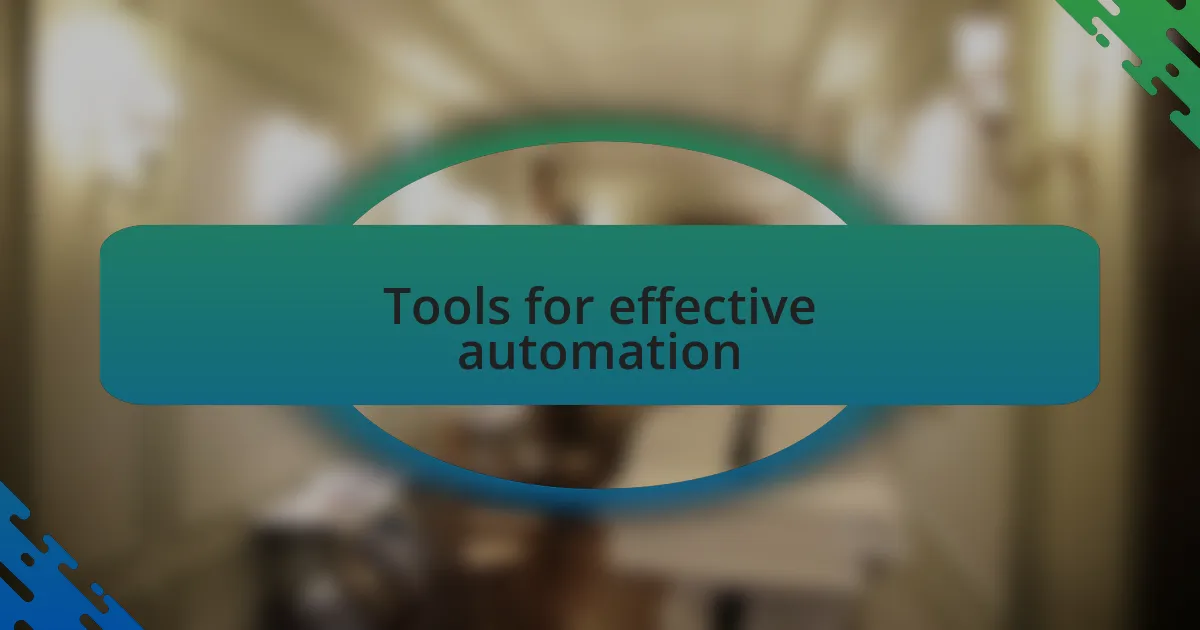
Tools for effective automation
When it comes to effective automation testing tools, I’ve had great success with Selenium. This versatile framework allows for browser automation and supports various programming languages, making it a go-to option for many testers, including myself. I still remember the time when I first used it; the flexibility it offered unlocked new testing possibilities that I hadn’t imagined before. Have you ever found a tool that completely changed how you approach testing tasks?
Another invaluable tool in my arsenal is JUnit for Java-based applications. Utilizing JUnit not only streamlined my testing process but also provided robust assertion functionalities, which helped identify failures swiftly. I recall an instance where I caught a critical bug early in the development cycle simply because I had the right framework in place. Doesn’t it feel great to prevent issues before they escalate?
Additionally, considering tools like TestNG has broadened my testing capabilities even further. TestNG’s support for parallel execution and data-driven testing has made my life so much easier. I often reflect on how much time I wasted before incorporating it into my workflow. It’s astonishing how a single tool can enhance both efficiency and quality. Have you taken the plunge into testing frameworks that might be a game changer for your projects?

Personal experience with automation
I’ve always viewed automation not just as a time-saver but as a catalyst for quality in my testing endeavors. When I started using automation scripts, I was amazed at how tedious manual testing faded away. One late night, while prepping for a big release, I watched as my scripts executed flawlessly, catching errors I would have missed otherwise. That moment reinforced my belief in automation; it felt like having an extra set of eyes that never tire.
One particular project stands out in my mind, where I implemented continuous integration (CI) with automated tests. It was a game changer. The initial setup was daunting, but once it was in place, I found that our team could deploy with confidence. My heart raced with excitement after every successful build; knowing that our automations had reduced risks was incredibly rewarding. Have you ever experienced that rush of knowing you’re mastering your workflow?
Reflecting on my journey, I realize the emotional rollercoaster automation testing can be. There were times of frustration, especially when things didn’t work as expected. Yet, overcoming those challenges led to deeper learning and skill development. My connection with automation continues to evolve, transforming my approach to testing into something proactive rather than reactive. Isn’t it fascinating how struggles often pave the way for significant progress?

Key takeaways and lessons learned
Key takeaways from my automation journey are rooted in adaptability and continuous learning. One particular instance that sticks with me was when a script I confidently wrote failed during a demo. Initially, I felt embarrassed, but this moment taught me the importance of flexibility in troubleshooting. Each failure became a stepping stone that not only improved my scripts but also refined my testing strategies. Have you ever discovered that a setback can lead to your greatest breakthroughs?
Another lesson came when I prioritized collaboration with my team. I distinctly remember gathering my colleagues to review our automation processes together. This brainstorming session unveiled perspectives I hadn’t considered and led to the creation of more efficient test cases. It was a reminder that automation isn’t just about technology; it’s about people coming together to leverage their strengths. So, how often do we stop to collaborate in our tech endeavors?
Finally, the emotional landscape of embracing automation has also been enlightening. There are days when the results feel euphoric, like every piece of the puzzle coming together seamlessly. Yet, other days are challenging, filled with debugging and frustration. I learned that persistence is key, and keeping a positive mindset has made all the difference. Have you ever pushed through tough days to emerge stronger and more knowledgeable?